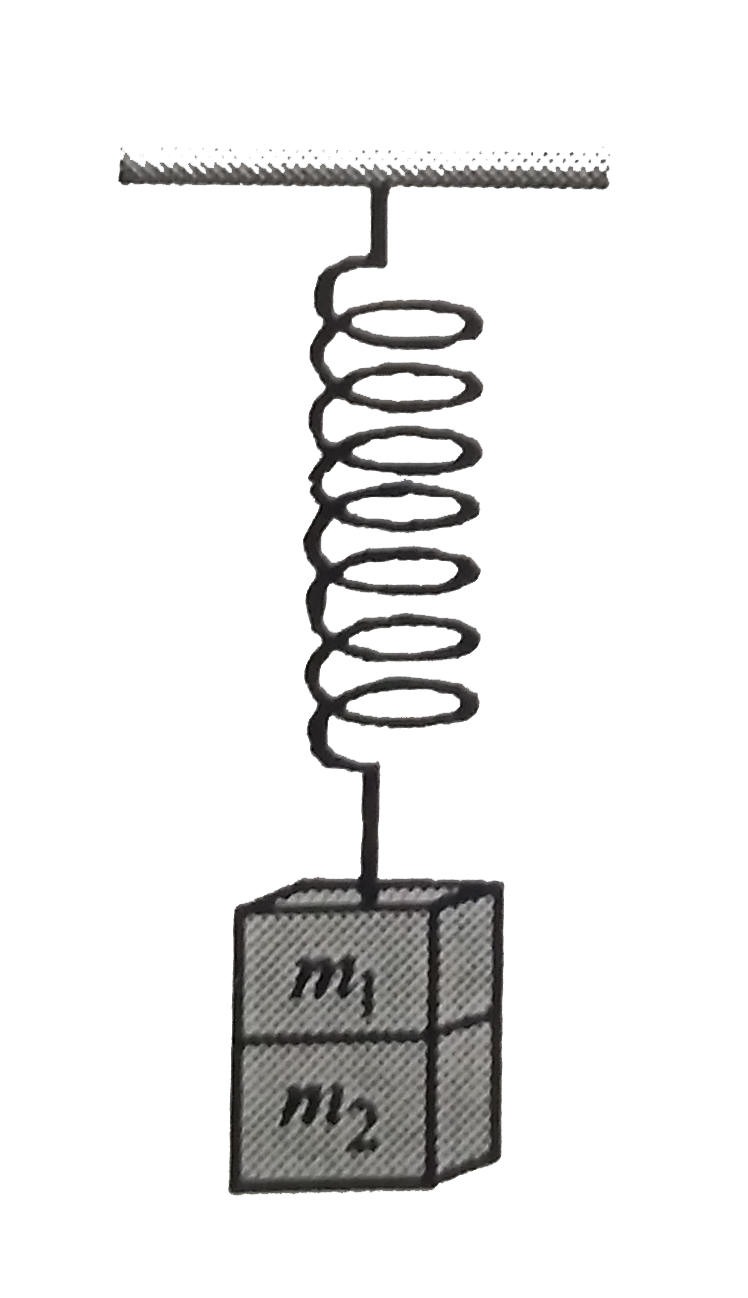A
B
C
D
Text Solution
Verified by Experts
|
Topper's Solved these Questions
NUCLEI
DISHA|Exercise PHYSICS|45 VideosView PlaylistPHYSICAL WORLD, UNITS & MEASUREMENT
DISHA|Exercise physics|45 VideosView Playlist
Similar Questions
Explore conceptually related problems
Knowledge Check
A
B
C
D
Submit
A
B
C
D
Submit
A
B
C
D
Submit
Similar Questions
Explore conceptually related problems
DISHA-OSCILLATIONS-PHYSICS
- A spring having a spring constant k is loaded with a mass m. The sprin...
01:44
|
Play - A mass m = 100 gm is attached at the end of a light spring which oscil...
02:47
|
Play - Two masses m1 and m2 are suspended together by a massless spring of co...
04:24
|
Playing Now - The composition of two simple harmonic motions of equal periods at rig...
02:39
|
Play - A particle, with restoring force proportional to displacement and resu...
02:11
|
Play - Amplitude of a wave is represented by A(c)/(a+b+c) Then resonance will...
01:01
|
Play - Two blocks A and B each of mass m are connected by a massless spring o...
05:13
|
Play - A simple pendulum of length L and mass (bob) M is oscillating in a pla...
04:45
|
Play - Identify wrong statements among the following The greater the mass ...
05:58
|
Play - A particle performs linear SHM such that it is placed on plat- form & ...
02:15
|
Play - A particle performs linear SHM such that it is placed on plat- form & ...
02:53
|
Play - Statement-1 : The periodic time of a hard spring is less as compared t...
03:13
|
Play - Statement-1 : The percentage change in time period is 1.5%, if the len...
02:29
|
Play - If x, and a denote the displacement, the velocity and the acceler of a...
01:03
|
Play - A mass is suspended separately by two different springs in successive ...
03:25
|
Play - A rod of length l is in motion such that its ends A and B are moving a...
04:16
|
Play - A particle of mass m executes simple harmonic motion with amplitude a ...
02:28
|
Play - A mass M attached to a spring oscillates with a period of 2s. If the m...
02:34
|
Play - The amplitude of damped oscillator becomes 1/3 in 2s. Its amplitude af...
02:21
|
Play - Assume the earth to be perfect sphere of uniform density. If a body is...
03:28
|
Play
